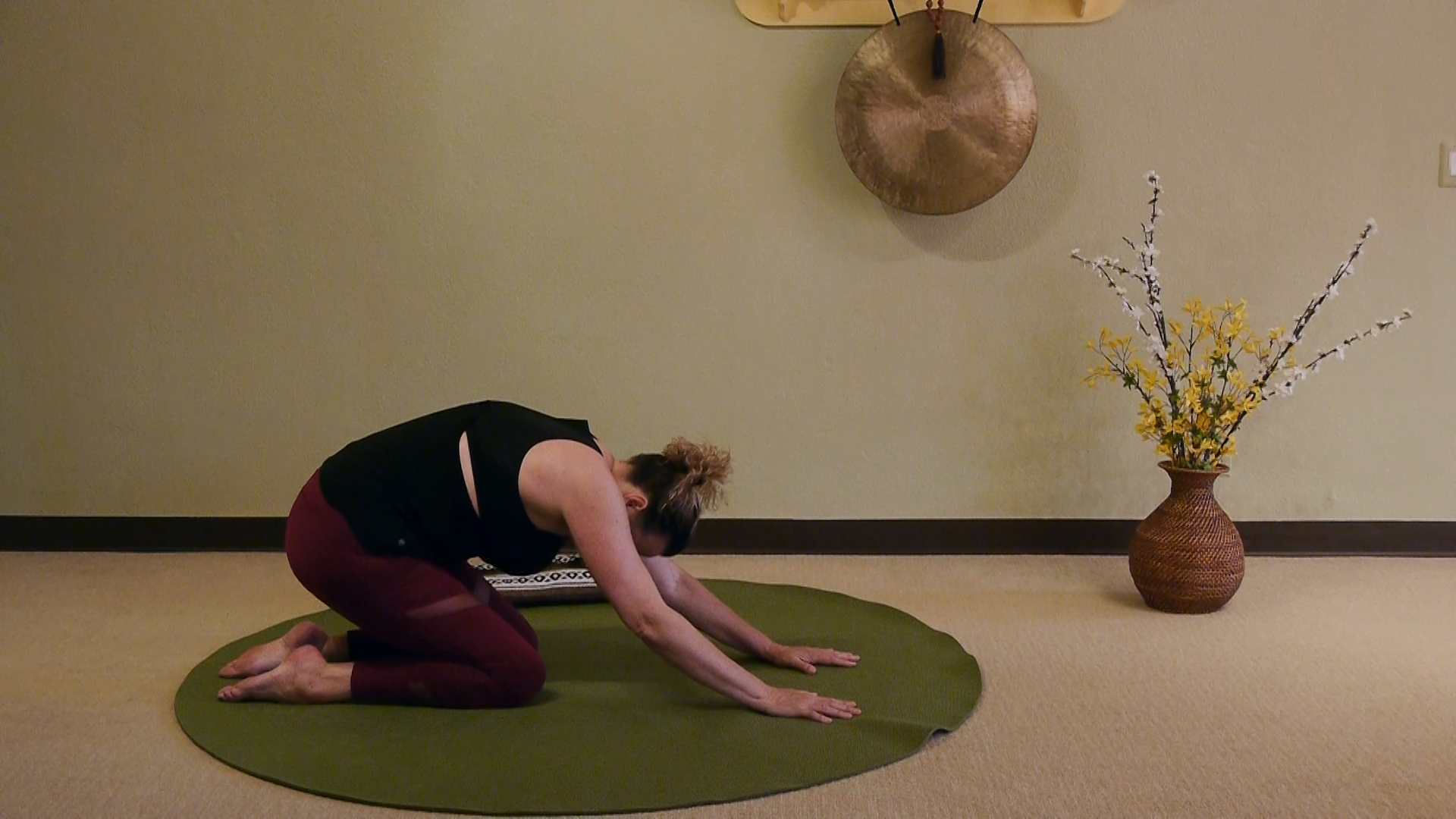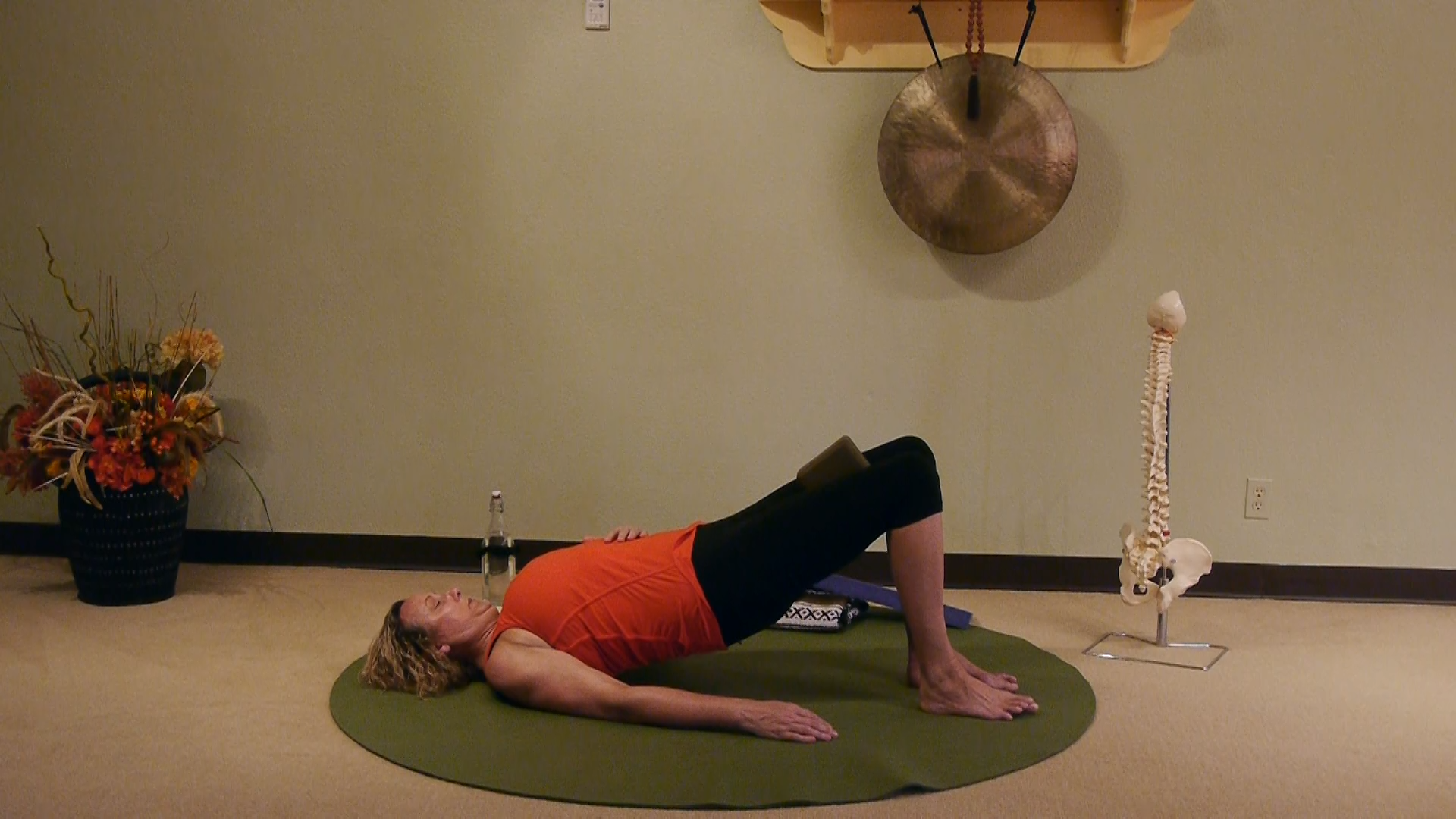What low back modifications are needed for Osteoporosis
I am an RYT 500, and am taking my 3rd training with YogaVista Academy, this time focusing on Justine’s Low Back Care certification (all have been excellent, by the way)!
I’ve trained in Yoga for Osteoporosis, and the main tenet is to maintain the back’s natural curves/not round the spine (no spinal flexion). I know in the Low Back Care training, Justine recommends Cakravakasana and Rolling Bridge as wonderful options for low back health. I teach several people with Osteoporosis/Osteopenia, and although I do teach Bridge to them, I emphasize coming down slowly vs. rolling the vertebrae down one by one (to not curve the spine). I do teach mild forward folds with hip flexion vs. spinal flexion to these students (Child’s Pose w/ wide knees and forehead on block and Downward Dog with knees bent/up on toes if the back remains long).
What is your thought re: Cakravakasana and Rolling Bridge for osteoporosis clients? Any additional modifications you would suggest?


Answer from Justine
Thank you for your question. It is always good to be extra careful with clients who have osteoporosis! And always let pain be their guide in movement, working with them for what is best in their body. In my opinion, rolling bridge is safe for someone with osteoporosis. The spine is somewhat supported by the floor, and although the cue is to come down ‘one vertebra at a time’ in truth that is to get them to slow their descent (even coming down on 2 or 3 exhales to really slow it down, pausing to inhale) and try to articulate their spine. There is not a possibility for strong anterior compression on the vertebral bodies that would risk a fracture. I always try to analyze a pose and see how gravity would affect the body. For instance, rolling up from a standing forward bend puts anterior compression on the vertebrae with the added weight of the torso increasing the gravitational pull and compression.
In the case of rolling bridge this is not present. Adding a hold at the top of bridge (working up to ten breaths over time) can add bone strengthening benefits to the hip bones, and if you add squeezing a block between the thighs to strengthen the adductors all the better! Another modification you could add for someone who has a pronounced kyphotic curve in their thoracic spine is raising the arms overhead as you raise the hips, this will create more axial extension in the thoracic spine.Cakravakasana is one of the best poses for overall spinal health, bringing circulation to the musculature around the spine and imbibing the intervertebral discs with fluid. It is also one of the best poses for bringing balance to the spinal curves, although that takes great concentration on the part of the practitioner as well as team work with the teacher to learn how best to balance the curves.
Someone who is very kyphotic will want to draw back strongly on the palms to keep the thoracic spine long and as they exhale and move back, take the flexion into the lumbar spine while keeping the thoracic long. I have a deep, lordotic cervical curve, so for me I keep my chin tucked so I am not increasing that curve. If someone has a deep, lumbar lordotic curve they want to keep their abs engaged and their lumbar long so they are not increasing their lumbar curve but are working toward balance. There is definitely flexion and extension happening throughout the pose, but it is in keeping it balanced within their natural curves that keeps it safe – working to improve their mechanics and not fall into old habits or ‘release valves.’
I hope that helps. The nuances of cakravakasana can always be honed and improved! I have found in working with people watching them and trying different language and approaches in the cues is necessary. But, when you see the light go off and you know they ‘got it’, it is such a wonderful moment.
Symmetrical Strength for your Structure with Justine Shelton, C-IAYT
Spinal Stenosis is a form of Osteoarthritis in the spine, which means there is a narrowing that can put pressure on the nerves. All nerves love space to function and this pose will help create more space. Grab a Yoga block and give it a try. For Rolling Bridge with the arms raised… scroll to the one minute mark in this video.
Enjoy the full class for Symmetrical Strength:
https://watch.yogavista.tv/programs/justine-shelton-symmetrical-strength-for-your-structure
Chakravakasana Vinyoga Sequence for Balancing Spinal Curves with Justine Shelton, C-IAYT
This is Justine’s favorite pose for working with all 3 spinal curves to keep the spine healthy, hydrated and supported. This is one of those “go-to” poses you can use to ease pain and stiffness in your back. Think of it as a vitamin pill for your spinal health!

